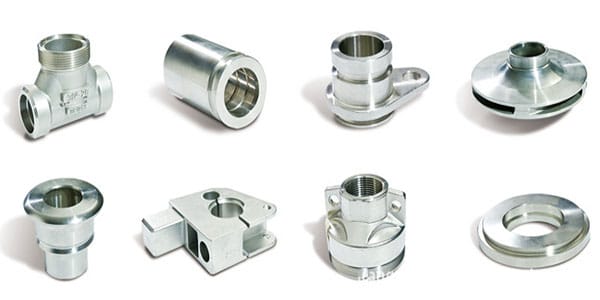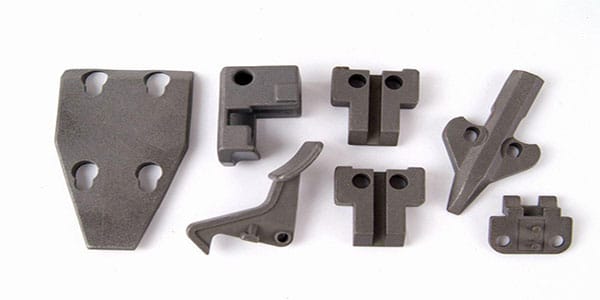Process for the use of foundry coatings in the production of cast steel
1.Sand quality control
In the process of molding the resin sand, it is necessary to ensure that the contact surface between the core and the molten steel is uniformly compacted, and to avoid loose defects of the sand-shaped concave portion, especially the sand type. The sand pattern should be carefully trimmed before painting the sand after demolding. Repair and polish the parts on the surface of the core, such as misalignment, quilting, and flash. Repair and repair the parts with small damage and lighter area. The loose sand and loose sand existing in the core should be excavated and repaired and polished. Then carefully remove the debris and floating sand on the surface of the core. And keep the sand surface clean. Create good conditions for the subsequent application of sand coatings. It is also the basis for obtaining a high quality as-cast surface of steel castings.
2. Paint preparation
Casting coatings are generally composed of refractory aggregates, binders, suspending agents, dispersion media, and the like. Commercial coatings take a long time from preparation to use. During this time, the coating will precipitate. However, a good sand coating will not agglomerate during storage. After settling, it is also easy to disperse when used. Therefore, the paint should be thoroughly stirred before use. Generally, low speed stirring is preferred. And avoiding the entrapment of gas during agitation to affect the quality of the coating. After the paint is stirred, the following indicators should be prosecuted according to the specific conditions.
(1) Density: The density reflects the amount of solid matter in the paint. It is directly related to the thickness of the coating that can be formed each time it is painted. According to the test, the density of the alcohol-based zircon powder coating should be controlled at 2.0-2.3 g/cm3. The density of the water-based zircon powder coating should be controlled at 2.1 to 2.3 g/cm3.
(2) Viscosity: The viscosity of the coating reflects the extent to which the coating liquid molecules and solid particles hinder the relative flow of the coating. Generally, a Φ6 mm viscosity cup is used for the conditional viscosity of the paint (indicated by the outflow time s). According to the test comparison, the conditional viscosity of the paint should not be lower than 25s when using manual brushing.
(3) Suspension: The suspension of the coating represents the ability of the coating to resist delamination and precipitation of the solid refractory aggregate. The cylinder method is generally used to judge the suspensibility of the coating. The suspension of the alcohol-based zircon powder coating should be >92% (24h). The suspension of water-based zircon powder coating should be >96% (24h).
3. Coating of paint
(1) Coating thickness control
Coating thickness is a key parameter that must be controlled when applying paint.
In production, when the coating is too thin, there is no coating adhesion on the surface of the cast steel casting, and the surface of the casting may also be free of sand. However, the surface of the casting is rough. At this point it is at a critical thickness. A cast steel part cast at a suitable coating thickness, with a residual coating of a certain thickness on the surface. The surface of the casting is smooth and beautiful. The appropriate coating thickness should be determined according to the size of the casting, the wall thickness, and the specific part of the casting. Generally thin-walled castings are controlled at 0.5 to 0.8 mm. Medium-sized castings are controlled at 0.8 to 1.2 mm. Thick and large castings are controlled at 1.2 to 2.0 mm. The R part of the casting arc, the rounded part, and the root of the riser are controlled by the upper limit. For the detection of the thickness of the coating, a local scribing method and a thickness measuring method can be employed. The former is more convenient for operation in actual production.
(2) Brushing.
The paintability of the paint directly affects the good use of the paint. Generally, the evaluation is comprehensively evaluated by the operator. Coatings with excellent paintability should have good leveling and drool resistance. From the perspective of colloidal theory, coatings must have good thixotropy in order to have the above-mentioned good coating properties. That is: the coating has a higher viscosity during the stationary process. However, it can be rapidly thinned during the stirring process (the viscosity is lowered). After removing the external force, the original structure can be quickly restored. To obtain a smooth, flat, and easy-to-shape core surface coating. Not only does the coating used require good paintability, but the operator should also use the coating correctly.
When using manual brushing, it should be controlled:
The coating thickness should be uniform, the surface should be smooth and flat, no brush marks and runny marks, no paint accumulation. The second pass can only be applied after the painting has been completed until the desired coating thickness.
Water-based paint: dry naturally for 2 to 4 hours after each application, and then brush the paint.
Alcohol-based paint: After each brushing area, it should be ignited in time to dry the brushed coating. And pay attention to safety to prevent accidental burns.
4. Dry coating
The coating should have good drying characteristics: that is, the coating should remain intact during the drying process and after drying, without cracks, pores, pinholes, bubbles and delamination. In particular, the above defects should not occur during multiple paintings. The coating should also have good resistance to moisture absorption after drying. Among them, the alcohol-based paint should also have good flammability. In the process of igniting and drying, the over-burning phenomenon does not occur under the condition that the coating is sufficiently dried. Use the core of water-based paint, dry it after brushing the paint and store it for a certain period of time. The drying method can be dried by drying oven or hot air dryer. The drying temperature of the alkali phenolic resin sand coating is generally not more than 150.
5. Evaluation
The paint use effect is mainly evaluated by the surface quality state of the produced steel castings. To obtain a smooth steel casting. Not only does the coating require good performance. It must also have excellent high temperature performance: First, the coating does not crack when the temperature changes drastically. Second, the physical and chemical properties of the coating at high temperatures are stable. Does not chemically react with liquid metals. The coating can be smoothly peeled off from the surface of the casting.
Only when the coating has the above high temperature properties can the coating integrity be maintained at high temperatures. And it provides effective isolation between liquid metal and sand. In order to ensure the good anti-sticking performance of the zircon powder coating used, the ZrO2 of the zircon powder used for the preparation of the coating is required to be >65%. In addition, the coating should also have a low gassing property to avoid pores and wrinkle defects on the surface of the steel casting.


